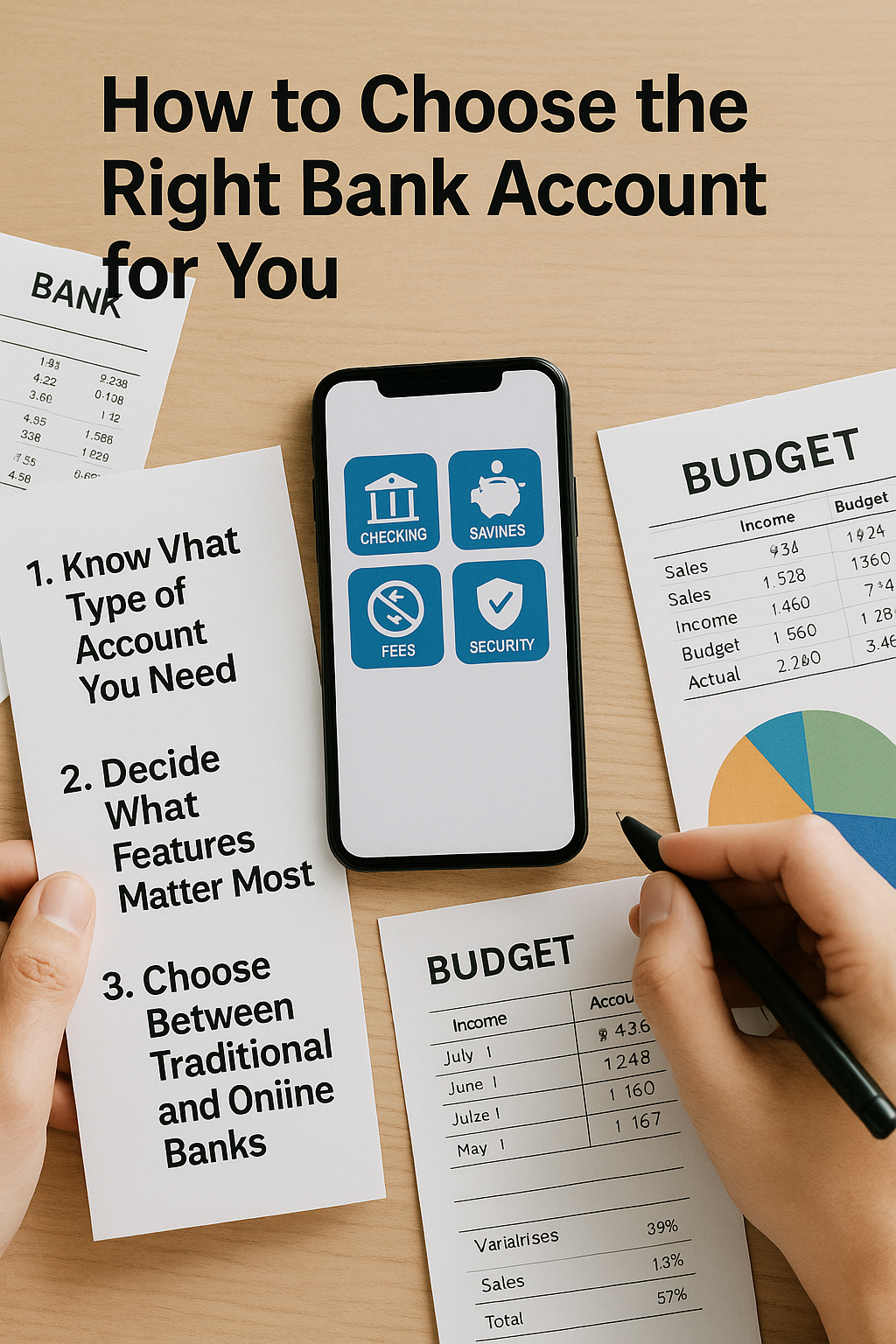Opening a bank account seems simple—until you realize just how many options exist. Traditional banks, online banks, credit unions, checking vs. savings accounts… How do you know which one is right for your financial goals?
In this article, we’ll break down how to choose the best bank account for your lifestyle, needs, and money habits—step by step.
Step 1: Know What Type of Account You Need
There are two basic types of bank accounts most people start with:
✅ Checking Account
- Used for everyday spending
- Comes with a debit card
- Allows direct deposit
- Often no interest (or very low)
Best for: paying bills, making purchases, receiving income
✅ Savings Account
- Used for saving money (short- or long-term)
- Typically earns interest
- Limited monthly withdrawals
- May be linked to checking account
Best for: emergency fund, short-term goals, basic savings
Step 2: Decide What Features Matter Most
Different banks offer different features. Consider what’s most important to you:
Key Features to Compare:
- No monthly fees or minimum balance
- High interest rate (especially for savings)
- Easy online/mobile access
- Large ATM network or free ATM use
- Customer service quality
- Overdraft protection options
- Account linking (checking + savings)
- Automatic savings or budgeting tools
Make a list of your must-haves.
Step 3: Choose Between Traditional and Online Banks
🏦 Traditional Banks:
- Physical branches
- Face-to-face service
- May charge higher fees
- Better for people who prefer in-person banking
🌐 Online Banks:
- No physical branches
- Lower fees or no fees
- Higher interest rates on savings
- Convenient apps and 24/7 access
- May lack cash deposit options
Tip: Many people use both—a traditional bank for checking and an online bank for savings.
Step 4: Consider Credit Unions
Credit unions are nonprofit financial institutions that offer:
- Low fees
- Competitive interest rates
- Personalized service
- Community-based membership
They’re great for local support and often more flexible with customer needs—but may have fewer ATMs or digital tools.
Step 5: Watch Out for Hidden Fees
Always read the fine print. Common bank fees include:
- Monthly maintenance fees
- Overdraft fees
- Out-of-network ATM charges
- Paper statement fees
- Minimum balance penalties
Look for banks that are transparent and offer fee-free accounts whenever possible.
Step 6: Check Security and Insurance
Make sure your money is protected.
- In the U.S., check for FDIC insurance (covers up to $250,000 per account)
- For credit unions, look for NCUA insurance
- Use banks with encryption, fraud alerts, and strong account monitoring tools
Security is non-negotiable.
Step 7: Read Reviews and Ask Around
Before choosing a bank:
- Check online reviews (Google, Trustpilot, Reddit)
- Ask friends or family what banks they like (and why)
- Visit the bank’s website or contact customer service with questions
Real feedback = better decisions.
Step 8: Test It Out (If You’re Unsure)
If you’re still unsure, start with a basic account that’s:
- Free to open
- Easy to close or switch
- Doesn’t require a big deposit
You can always upgrade or change accounts as your needs grow.
Bonus: Features to Look for in a Great Bank App
- Clean, user-friendly interface
- Mobile check deposit
- Transaction notifications
- Budgeting tools
- Goal-setting or savings automation
- Secure login (biometrics or 2FA)
A great app can make managing your money 10x easier.
Final Thoughts: Pick the Bank That Works for You
The “best” bank account is the one that fits your lifestyle, habits, and goals—not just the one with the flashiest features.
Choose with intention. Ask questions. And don’t be afraid to switch if your current bank isn’t serving you.
Banking should feel simple, secure, and supportive of your financial journey.


Sem comentários